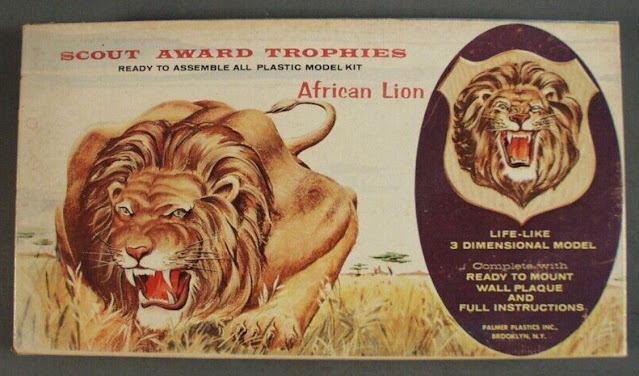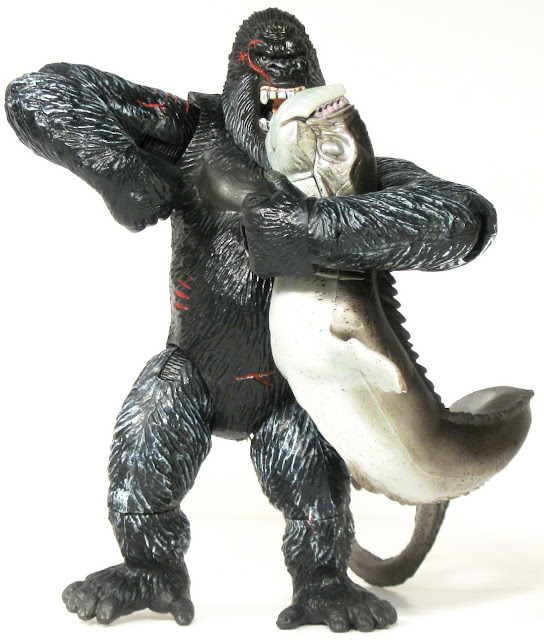In the 1950s, two US kit companies came up with the idea of making Big Game hunting trophy kits. These usually comprised stuffed and mounted animal heads, on a simulated wooden plaque, that you could hang on a wall.
Precision Plastics made four such kits, and Palmer Plastics made another six. Neither of these ranges appears to have lasted very long.
Most Palmer boxes only give the address as Brooklyn, New York. However, at the time the Trophy kits came out, it seems they were based at 155 Quincy St., Brooklyn, New York City.
They do seem to have moved around a good deal, but I do not know in what order the various addresses were used. Palmer Plastics were best known for their budget-priced car kits, but they also produced some more unusual subjects.
The Palmer trophy kits seem to date from the late 1950s, although I could not pin down an exact date. Scalemates say 1957; while a listing on Worthpoint for a Palmer sales brochure mentions 1959 - although no date is visible on the page.
Most of the Trophy kits initially sold for $1.00. All were clearly smaller than life-size, but no scale is mentioned on either the boxes or the instruction sheets.
The second kit in the series was the African Lion, kit number 22-100 (the suffix being the retail price). It was described as a 'Life-Like 3 Dimensional Model'.
The first three Palmer kits had 'Scout Award Trophies' on the box tops, and showed the other two kits - the Alaskan Timber Wolf and Kodiak Bear, on the side of the box. This seems to suggest a marketing tie-in of some sort with the Boy Scouts.
The last three kits in the series had 'Sportsmen Trophies' on the boxes. These were the Atlantic Sailfish, Shoveler Duck, and White Tail Deer.
The kits were later re-issued (1963 according to Scalemates), as Animals of the World, in smaller boxes with revised artwork. These boxes do not appear to refer to the models as hunting trophies, and the price was reduced to a uniform 49 cents, with the Lion being re-numbered 22-49.
The Lion was a 20-part kit, moulded in white plastic. There was also a mottled brown, or plain brown, shield-shaped plaque, with two mounting hooks.
As with most of these trophy kits, the head was a complex looking, multi-piece assembly. The painting instructions recommended either Pactra "Namel" or Testors "PLA" paints, and referred you to the illustration on the box as your painting guide, with no mention of what colours might be most suitable.
These kits do not appear to have been available since the 1960s, and Scalemates do not list any re-issues by other companies. There are only a few sales listings for the kits, with the early style boxes being the most common.
Ten photographs from Worthpoint
Paul Adams from New Zealand






































.JPG)
